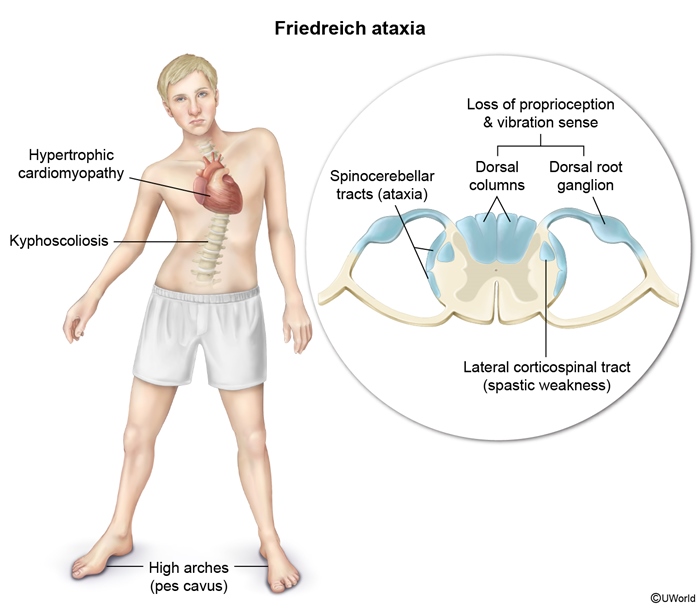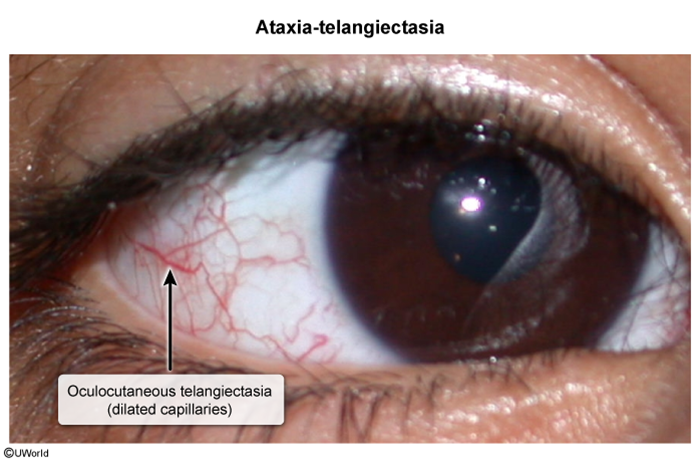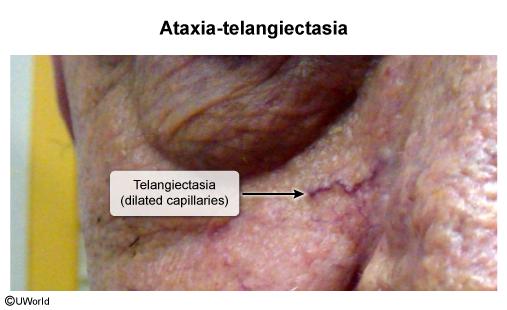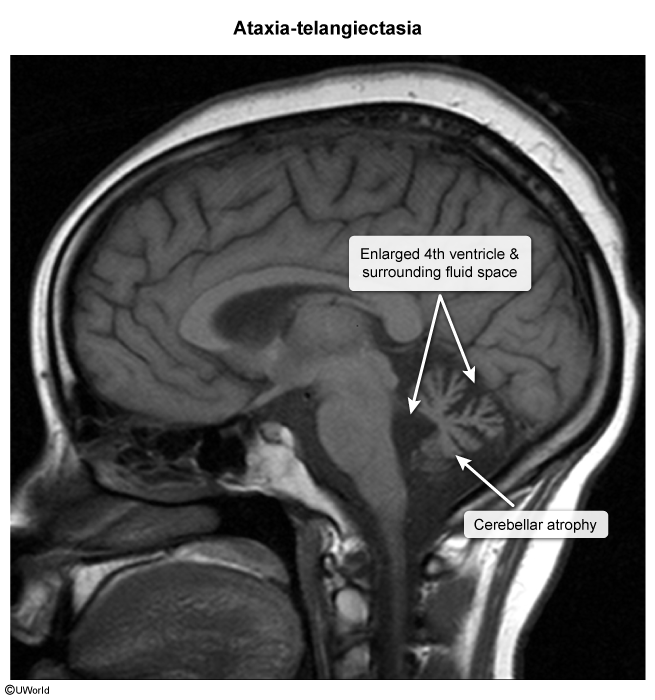Ataxia-Telangiectasia
Article Sections
Introduction
Ataxia-telangiectasia is a rare autosomal recessive disorder in which defective DNA surveillance and repair results in immunodeficiency, cerebellar ataxia, oculocutaneous telangiectasias, and a predisposition to malignancy.
Pathogenesis
Ataxia-telangiectasia occurs due to a mutation in the ataxia-telangiectasia mutated (ATM) gene on chromosome 11q22. Normally, the ATM gene encodes a kinase that detects nuclear DNA damage (eg, DNA breaks). In response, the ATM kinase phosphorylates regulatory proteins (eg, tumor suppressor gene products) that halt the cell cycle to allow for repair. The ATM kinase is also involved in mitochondrial DNA surveillance and repair, maintaining mitochondrial homeostasis. Without ATM kinase, cells are particularly sensitive to ionizing radiation and are more likely to continue replicating damaged nuclear and mitochondrial DNA. Over time, genetic mutations can accumulate within the cell, leading to cellular genomic instability that can result in cellular dysfunction and malignant transformation.
Continue Learning with UWorld
Get the full Ataxia-Telangiectasia article plus rich visuals, real-world cases, and in-depth insights from medical experts, all available through the UWorld Medical Library.
Figures

Images


